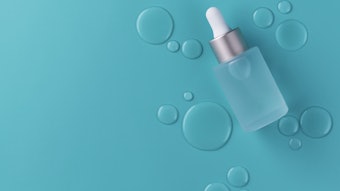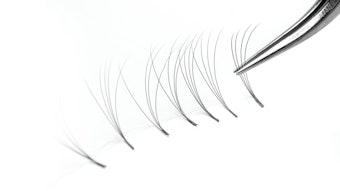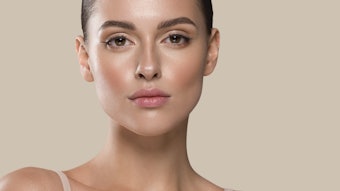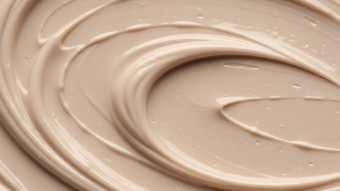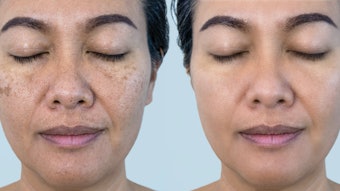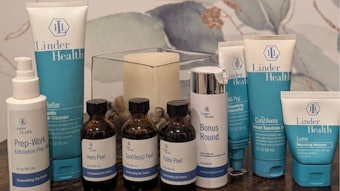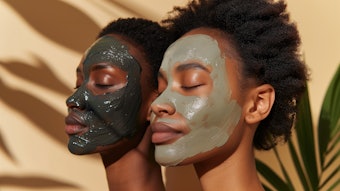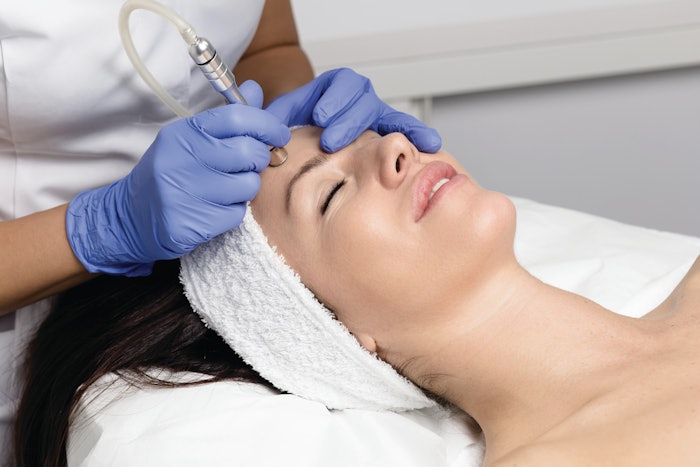
Scarring lasts a lifetime, and as most of you know, acne impacts over 85% of the population in the United States, which is the premiere reason for scarring on the face. One in every five acne sufferers will experience scarring, leading to emotional and psychological impacts.
This article is only available to registered users.
Log In to View the Full Article
Scarring lasts a lifetime, and as most of you know, acne impacts over 85% of the population in the United States, which is the premiere reason for scarring on the face. One in every five acne sufferers will experience scarring, leading to emotional and psychological impacts.
Scars are formed when the skin has inflammation from an injury and tissue begins to race to the surface for protection. When skin is in a wounded state and inflammation is present, it is more vulnerable to scarring. Long-term inflammation also leads to erythema or hyperpigmentation on the skin surface. If the wound gets manipulated or interrupted scarring is increased. Our skin undergoes a wound healing process and interrupting the flow greatly increases the potential for scarring. Remember, acne is a wound and the tissue becomes damaged the longer the wound or lesion is on the skin.
We live in a time with many treatment options to reduce the appearance of acne scarring, but what about preventing it? Let’s explore the types of scarring and ways to both prevent and reduce the lasting effects.
Types of Acne Scars
Atrophic scars are the most common type and appear as indentations or pitted areas on the skin. As the skin attempts to heal, collagen becomes destructed and unorganized, leading to atrophic scarring. This type of scarring is broken down into three main types—ice pick, boxcar and rolling.
- Ice pick scarring is the most common type of acne scar and is characterized by a narrow, deep, v-shaped area extending down towards the dermis. It has the name “ice pick” as it resembles small puncture wounds on the skin.
- Boxcar scars are the second most seen acne scars. This type of scar has a very distinct irregular shape, but a well-defined edge, plus it is much wider in size than ice pick scars. Those who suffer from cystic acne will see this, especially if the acne is left untreated. During the healing stage, scar tissue is formed unorganized.
- Rolling scars have more of a sloping edge that can be “smoothed” out when stretched. This type of scarring is seen in those with severe, untreated acne, acne that relapses or those who excessively pick at acne lesions. Again, insufficient collagen is the culprit due to the inflammation being deep in the skin.
Hypertrophic scars are also seen, especially in ethnic skin. This type of scarring occurs during the healing process as it is disrupted by prolonged inflammation and infection. Hypertrophic is an overgrowth of collagen and is usually the size of the acne lesion that caused the scar. Keloid scarring is considered a form of hypertrophic, however, the size of the keloid is often larger than the original acne lesion.
Post-inflammatory erythema and pigmentation are also characteristic of scarring, though both will improve over time. Erythema is a sign of inflammation as the acne lesion is still in the healing process. It's believed that the epidermis is thinner during this stage of healing. Pigmentation is also a sign of inflammation present as the melanocyte cells respond by increasing melanin production near the sight of the wound. Keep in mind, that hybrid scarring, a mix of textural and post-inflammatory, is very common in acne sufferers and professionals may see a variety, depending on the severity of the acne.
Ingredients to Prevent Scarring
When it comes to ingredients for an acne regimen, wound healing, anti-inflammatory and reparative are vital. No matter where they are on the journey, introducing these types of ingredients will make all the difference in preventing the skin from scarring.
Epidermal growth factors are found naturally within our skin and are released every time it is wounded. By applying growth factors found in RA Acne Remedies Vital Repair Gel, inflammation is decreased, blood vessel synthesis is stimulated around the wound and healing is increased. A clinical study demonstrated a minimum of 25% improvement in healing and collagen synthesis after the first 24 hours of topical application.
D-alpha tocopherol, the chirally-corrected version of vitamin E, is well-known for its antioxidant protection as it protects the cellular membrane and extracellular matrix. However, it also has anti-inflammatory properties, reducing erythema and edema, plus it promotes healing of wounded tissue.
L-arginine is one of twenty semi-essential amino acids present in proteins. It converts into nitric oxide, increasing blood flow and resulting in an increase in wound-healing capabilities.
Encapsulated retinal is an excellent ingredient for both the treatment of acne and acne scarring. It is the precursor to retinoic acid and is superior to other vitamin A formulas in the treatment of acne, including tretinoin and adapalene. It naturally increases fibroblast production, resulting in the development of healthy collagen and elastin proteins.
As a bonus, this ingredient helps with both wound healing and tissue regeneration as well as reducing appearance of scars!
Ingredients to Reduce Scarring
Many ingredients help diminish the appearance of scarring. Using these along with wound healing ingredients can help the harshness of the scar as well as prevent further scarring.
Alpha and beta hydroxy acids (AHAs and BHAs) are also beneficial in the treatment of acne scarring. AHA’s, like glycolic acid, quickly penetrate through thicker skin, increasing exfoliation and softening texture. Salicylic acid, a well-known BHA for its anti-bacterial properties, also reduces inflammation in the skin, making it a great choice for hybrid scarring.
Trichloroacetic acid, or TCA, is a star ingredient in the treatment of acne scarring. A safe, non-toxic, self-neutralizing acid that quickly penetrates the skin, breaking down cellular buildup and softening scar tissue. RA Skin Care’s TCA Sake Peel is a blend of TCA, salicylic acid and sake ferment that works by refining texture, reducing inflammation and lightening pigmentation.
Scar Reduction Treatments
Chemical peels have been used for decades to treat acne scarring. Solutions best for textural scarring will likely incorporate a blend of TCA and other acids, like an AHA or BHA. A series of vitamin A peels may be a great choice for almost any scar, especially those experiencing hypertrophic or inflammatory scarring. Look for encapsulated retinol, combined with Perfection Peptide, l-carnitine and turmeric extract for optimal results.
Microneedling has become a very popular treatment. During this procedure, tiny needles create micro-injuries to the skin, stimulating collagen and elastin synthesis. This treatment may be offered in conjunction with a series of chemical peels to soften atrophic scars.
Microdermabrasion has been used for many years in the aesthetic industry. Crystal or diamond-tipped, this procedure softens skin and reduces the appearance of mild to moderate acne scars. The results are more significant when microdermabrasion is combined with chemical peels.
Tips to Prevent Scarring
Educate! Educate yourself and your acne clients—this is the beginning! Explain the importance of not picking or touching skin. Drill in that acne lesions are wounds and need time to heal. Touching and picking acne lesions will lead to more acne and greatly increase their risk of scarring.
Start early! The earlier you can get young teens on a simple skin regimen, the more likely they can avoid scarring.
Synergistic home care will give them transformational results! Being consistent with three steps morning and night is a game-changer for acne. Suggest products to reduce bacteria and inflammation, without over-drying the skin. Look for ingredients like the heart of green tea, totarol, l-mandelic and salicylic acids in cleansers, toners and corrective serums.
Exfoliate to reduce buildup and encourage oxygenation within the pores, eliminating acne bacteria. This will also soften textural concerns clients may already have. Remember to avoid over-exfoliating as it causes inflammation and prolongs the healing process. Ingredients like l-mandelic acid, encapsulated retinal and less frequent use of AHA’s and BHA’s help this area. A light vitamin A peeling series is excellent in reducing or eliminating scarring!
The most important step in eliminating or reducing scarring is to focus on the importance of healthy wound-healing formulas! This will reduce the risk of scar tissue forming. Incorporate ingredients such as epidermal growth factors and a refined, chirally corrected d-alpha tocopherol, along with zinc oxide. When acne lesions flare up, teach clients to ice their skin to reduce swelling, pain and inflammation.
Remember, education is key when working with acne skin, and with these powerful ingredients, treatments and tips, acne clients will experience clearer, healthier skin!
